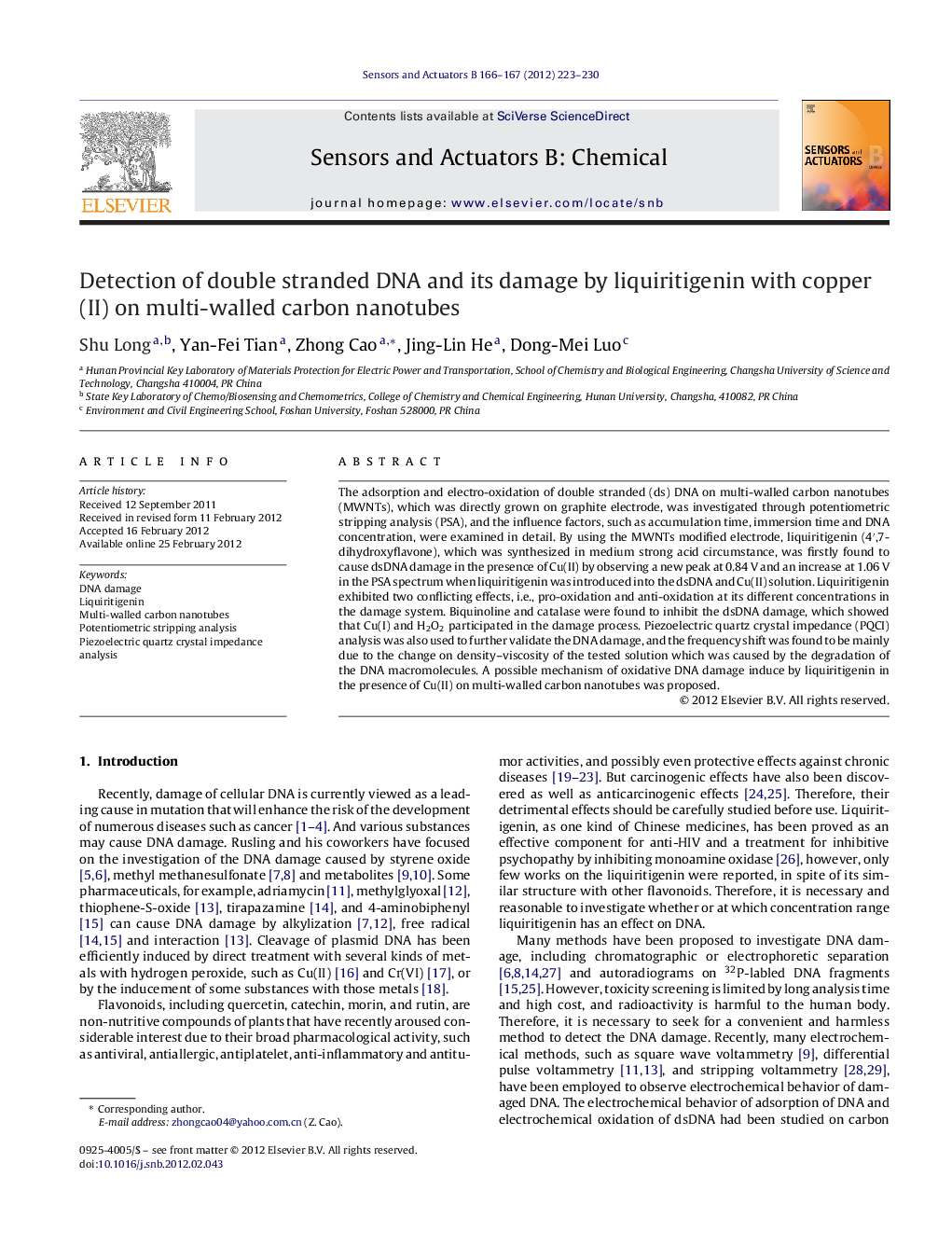| Article ID | Journal | Published Year | Pages | File Type |
|---|---|---|---|---|
| 742572 | Sensors and Actuators B: Chemical | 2012 | 8 Pages |
The adsorption and electro-oxidation of double stranded (ds) DNA on multi-walled carbon nanotubes (MWNTs), which was directly grown on graphite electrode, was investigated through potentiometric stripping analysis (PSA), and the influence factors, such as accumulation time, immersion time and DNA concentration, were examined in detail. By using the MWNTs modified electrode, liquiritigenin (4′,7-dihydroxyflavone), which was synthesized in medium strong acid circumstance, was firstly found to cause dsDNA damage in the presence of Cu(II) by observing a new peak at 0.84 V and an increase at 1.06 V in the PSA spectrum when liquiritigenin was introduced into the dsDNA and Cu(II) solution. Liquiritigenin exhibited two conflicting effects, i.e., pro-oxidation and anti-oxidation at its different concentrations in the damage system. Biquinoline and catalase were found to inhibit the dsDNA damage, which showed that Cu(I) and H2O2 participated in the damage process. Piezoelectric quartz crystal impedance (PQCI) analysis was also used to further validate the DNA damage, and the frequency shift was found to be mainly due to the change on density–viscosity of the tested solution which was caused by the degradation of the DNA macromolecules. A possible mechanism of oxidative DNA damage induce by liquiritigenin in the presence of Cu(II) on multi-walled carbon nanotubes was proposed.
